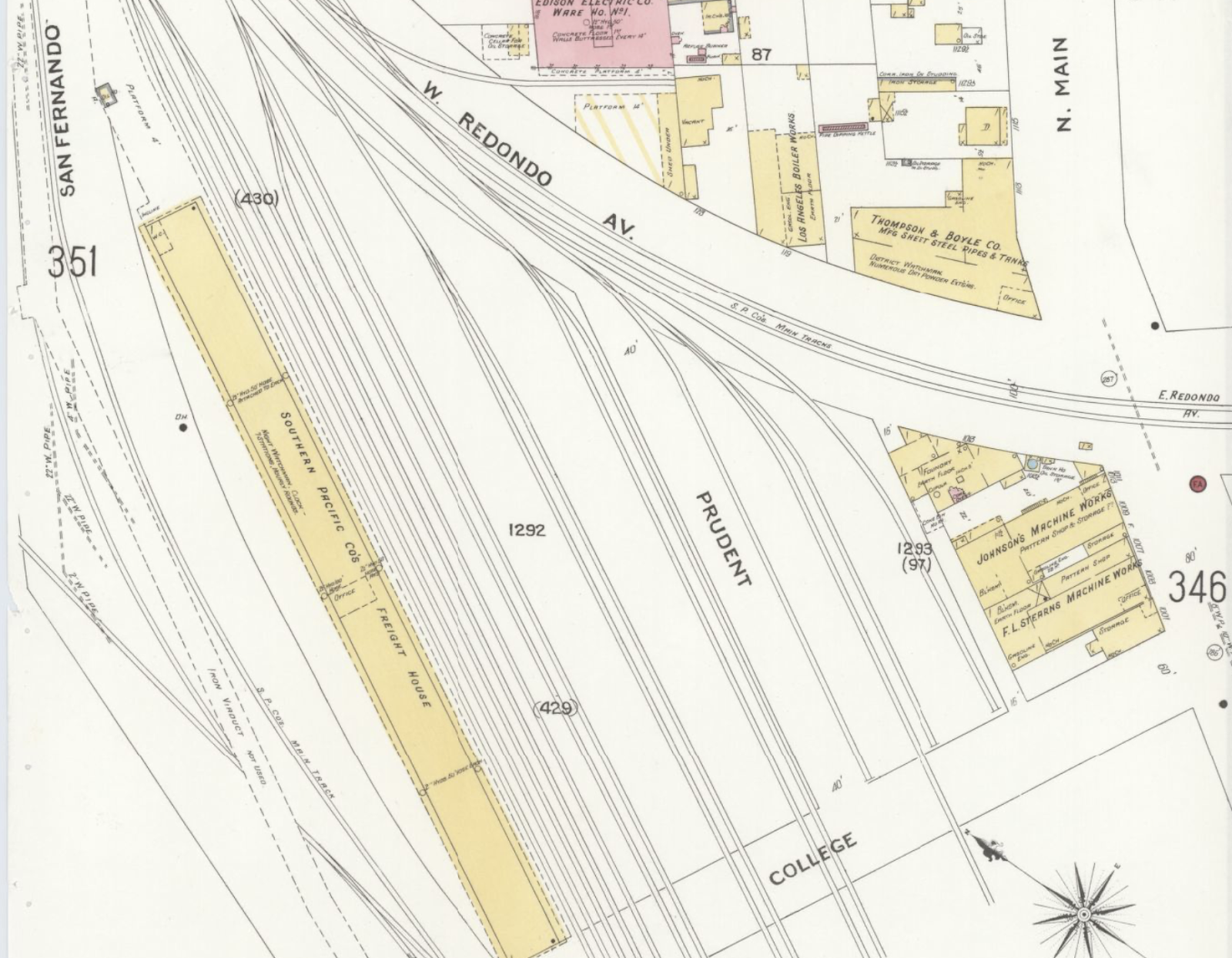Beaudry Street, named for the Beaudry brothers, still exists.
Victor Street, named for Victor Beaudry, still exists (although it was bisected by the 101 long ago).
Victor Heights, also named for Victor, still exists (although it tends to get lumped in with Echo Park).
There is no street named for Prudent Beaudry specifically.
Anymore, that is. There was a Prudent Street!
 |
| 1894 Sanborn map showing Prudent Street |
 |
| 1906 Sanborn map showing Prudent Street |
 |
| 1920 Sanborn map key detail showing Prudent Street |
 |
| Sanborn map revised 1923, showing Prudent Street Sanborn Map republished 1953, still showing Prudent Street |
A 1950 atlas page that is unfortunately too blurry to post here indicates that Prudent Street was close to Naud Junction, the Bauchet Tract, and the elusive (because the street grid is gone) Ballesteros Tract.












